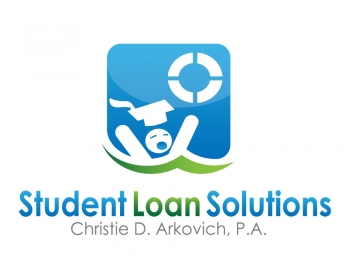Are you tired of endlessly paying on your student loans, only to see no headway at all being made?
I wrote this article for our local Cramdown publication for Tampa Bay attorney advocates and bankruptcy attorneys – these are tips that everyone should know about and ask their advocate for assistance with. Don’t rely only on your servicer in other words. Contact us if you’d like to know more about this. These tips are designed to SAVE YOU MONEY and instead COST THEM MONEY. This is kinda long, but the best tips are near the end, so please keep reading, it’ll be the best thing you’ll read all year if you have student loan debt!
The CARES Act signed into law on March 27, 2020 (the “Act”), provided for forbearance and interest waiver for all Direct Loans that are owned by the federal government. Older Federal Family Education Loans (“FFEL”) were not protected by the Act, but the Department of Education encouraged servicers of these federal loans to take similar actions to relieve borrowers of the need to make payments during the pandemic. Those with Perkins loans or private loans also were not protected from interest accrual or the need to make payments and this resulted in a patchwork of forbearances and other temporary payment relief.
The CARES Act provided other relief such as no need to recertify income during the forbearance period, suspension of all ongoing collection activities, and for credit reporting purposes, any payment that was suspended would be treated as if the borrower made a regularly scheduled payment. President Trump extended the CARES Act as it related to student loans until the December 31, 2020.
As we near the end of the year, the payment due date is fast approaching for many private and federal student loans unless additional Congressional or Presidential action is taken to extend that date. In my own opinion, I believe the repayment of federal student loans will be suspended again for at least three if not six months starting for the January payment (although it could be retroactive due to the transition of power). There is likely to be much confusion in January as to whether a payment is due.
So what can be done about student loans in the meantime?
Some options include a consolidation of older FFEL loans to convert them to the newer Direct loans to be eligible for any future legislative efforts as well as Public Service Loan Forgiveness and the Paye/Repaye Plan which allows for 10% discretionary income driven payments. Care should be taken to ensure that the borrower does not lose the benefit of any accrued income driven payments however. Consolidation is essentially a new loan which replaces the older FFEL loans. Any accrued time toward forgiveness is lost. If the new payment term is shorter or the borrower is nearing retirement or will be retired at the time of forgiveness, that may be okay, but often it is not.
Other COVID-19 opportunities to reduce student loan debt include:
- Get the borrower in a rehab plan while the loans are in a CARES Act forbearance. Forbearance months during a rehab will count toward the nine month rehabilitation period to cure a default (and avoid a concurrent garnishment that has ceased during the CARES Act suspension on collection activities).
- If a bankruptcy is needed for consumer debt – why not include an adversary proceeding to discharge private student loan debt for a true clean slate?
- Recalculate an Income Driven Plan while income is reduced – for benefits that will last the remainder of the 12 month plan.
- CARES Act Forbearance months count toward PLSF forgiveness, usually forbearance does not.
- If a borrower is older, say in his/her 50s-60s, and suffers from underlying health conditions, perhaps the inability to return to full time work (due to their health concerns or that of a potential employer) in a COVID and even post-COVID era could be the basis for a Total and Permanent Disability?
- If a borrower is suffering from the long-hauler effect of COVID with persisting symptoms, it may not be possible for a Total and Permanent Disability right now due to the uncertainty of how long their symptoms will last, but this may be a remedy 1-3 years down the road if their inability to work persists.
- Privatize the loans for lower interest rates: If the borrower has not suffered a reduction in income, but merely wants to pay their student loans down as fast as possible, the borrower may wish to refinance their federal loans to a private loan for a lower interest rate. While the rates do vary, a typical private loan interest rate may be around 4%, while the national average for federal loans is 6.8%, which is relatively high in today’s marketplace. However, a refinance to a private loan will cause the borrower to lose any federal benefits such as 1) the ability to switch to extended payment terms; 2) lengthy forbearance or deferment options; 3) income driven payments; 4) forgiveness of various kinds; and 5) ability to discharge the loan(s) in full in the event of disability. Therefore, this option is ill advised unless the borrower is young and healthy and not likely to receive forgiveness based upon a high income or public service.
As a student loan advocate, our advice is to use this time wisely to try and eliminate or reduce student loan debt wherever possible rather than merely pushing the can down the road during this pandemic. This will help those burdened with heavy student loan debt obtain a true clean slate in the future. Please reach out to us if you’d like to say goodbye to your student loans!
 Reboot Your Life: Tampa Student Loan and Bankruptcy Attorney Blog
Reboot Your Life: Tampa Student Loan and Bankruptcy Attorney Blog



